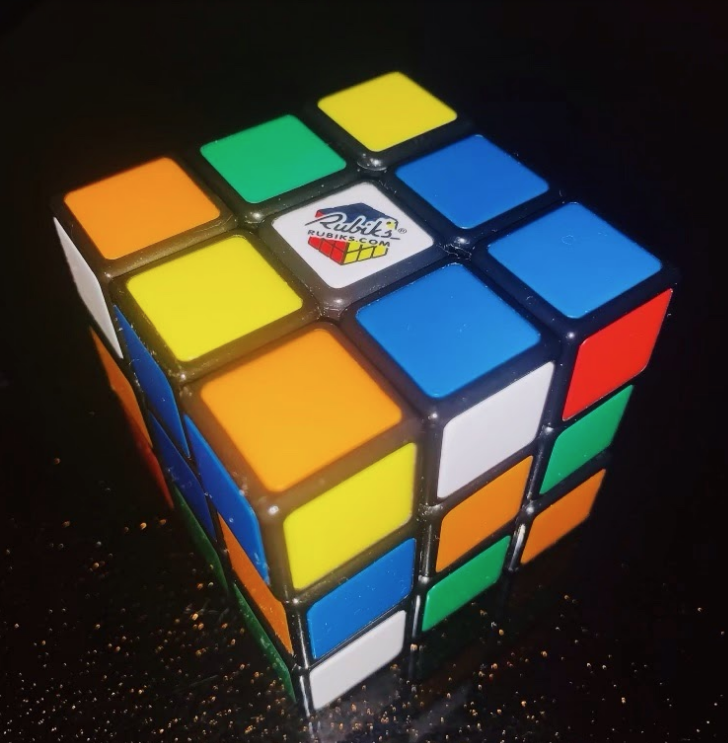The Rubik’s Cube: Fun, Frustrating, or Both?
3×3 Scrambled Rubik’s Cube
January 13, 2021
In 1974, Hungarian architecture professor Ernõ Rubik invented the “Bűvös Kocka,” which translates to the Magic (now known as “Rubik’s”) Cube. This three-dimensional puzzle originally took a month to solve, but can now be done in seconds. The current record holder for the fastest solve of the Rubik’s Cube is 3.47 seconds by Yusheng Du, according to Rubik’s; however, in 2016, the Infineon robot was developed to solve the Rubik’s Cube in only 0.637 seconds!
According to Business Insider, it has been mathematically calculated that there are 43 quintillion–that is 43 followed by 18 zeros–possible configurations of the cube. Using these calculations, in 2010, a group of mathematicians and computer programmers proved that any cube could be solved in, at most, 20 moves. Now, you may wonder, “How is it possible to solve a Rubik’s Cube with a seemingly infinite number of combinations?” The answer is: Algorithms!
Algorithms are a specific set of rules or operations that can be followed to find a solution to a problem. Cubers often memorize a series of algorithms regarding the orientation, layers, sides, colors, combinations, turns, and specific shapes of the cube to manipulate. Senior Aaron Zhang claims, “The process of memorizing the algorithms was very meticulous. It took me a week to learn, but then a month to master. Once I started practicing and playing around with the cube, I picked it up very fast. I was fascinated by the puzzle and after completing the 3×3, I moved on to the 4×4, 5×5, and 6×6. The whole process was really fun and interesting.”
Two summers ago, I learned how to solve a standard 3×3 Rubik’s Cube (3 cubes length and 3 cubes width; there are a total of 6 faces). It was difficult at first, but I constantly picked up the cube and practiced. After two months, I had finally solved the cube. Although it was not under 10 seconds, I found it rewarding to challenge myself in doing something new and persevering to the end.
Next time you are looking for a challenging and fun puzzle to work on, consider solving a Rubik’s Cube! For more information, read Ernõ Rubik’s published book, Cubed, to learn about the inventor of a toy that would continue to be popular for decades.


